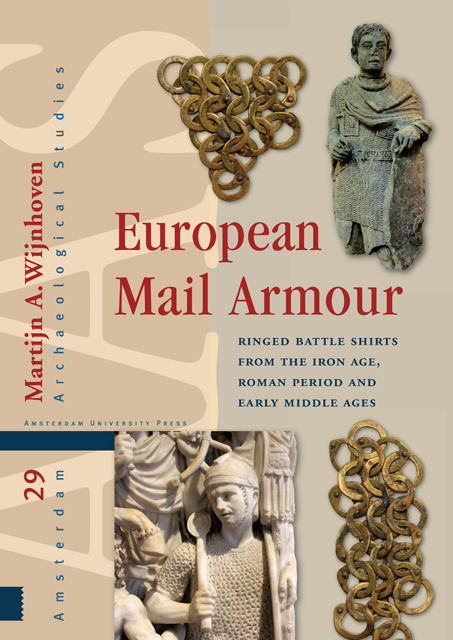Book contents
- Frontmatter
- Contents
- Acknowledgements
- Dedication
- 1 Introduction
- 2 The origins of mail armour
- 3 Distribution and archaeological context
- 4 The iconography of early mail armour
- 5 The naming of mail armour
- 6 Decoration in mail garments
- 7 Padded garments
- 8 The craft of making mail rings
- 9 Weaving patterns
- 10 The construction of mail garments
- 11 Ring characteristics
- 12 Final considerations
- Bibliography
- Database
- Appendix 1 Catalogue of mail armour
- Appendix 2 Catalogue of hybrid armour
- Appendix 3 Catalogue of isolated finds of fasteners and fixtures
- Appendix 4 Finds excluded from the database
7 - Padded garments
Published online by Cambridge University Press: 24 November 2022
- Frontmatter
- Contents
- Acknowledgements
- Dedication
- 1 Introduction
- 2 The origins of mail armour
- 3 Distribution and archaeological context
- 4 The iconography of early mail armour
- 5 The naming of mail armour
- 6 Decoration in mail garments
- 7 Padded garments
- 8 The craft of making mail rings
- 9 Weaving patterns
- 10 The construction of mail garments
- 11 Ring characteristics
- 12 Final considerations
- Bibliography
- Database
- Appendix 1 Catalogue of mail armour
- Appendix 2 Catalogue of hybrid armour
- Appendix 3 Catalogue of isolated finds of fasteners and fixtures
- Appendix 4 Finds excluded from the database
Summary
‘And first, they must have for the said jacks, thirty or at least twenty-five folds of cloth, and a stag's skin, at least those of thirty with the stag's skin being the best. Cloth that has been worn and rendered flexible, is best for this purpose, and these jacks should be made in four quarters. The sleeves should be as strong as the body… Thus shall the wearer float, as it were, within his jacket at ease; for never have been seen half a dozen men killed by stabs or arrow wounds in such jacks, particularly if they be troops accustomed to fighting.’
The Ordinances of Louis XI of France (AD 1461-1483)
THE ADVANTAGES AND DISADVANTAGES OF FLEXIBLE ARMOUR
One of the main reasons that mail remained a highly popular type of armament throughout the ages is probably that, due to its flexibility, it offers proper protection while allowing the wearer to move freely. One of the drawbacks of a flexible mesh, however, is that while it provides excellent defence against slashing and cutting, and performs reasonably against stabbing, it cannot fully avert (high-velocity or heavy) projectile points. Likewise, it offers little protection against blunt force trauma, in contrast to plate or segmented armour which are able to redirect the blow force to a larger area. In brief, mail is perfectly able to withstand the cutting action of a sword, but it will not protect the wearer against its impact, which can still cause considerable damage like broken bones.
For that reason, during the Middle Ages the coat of mail was never a standalone armour, but was complemented by a padded garment worn underneath (fig. 7.1). The padding provided an extra layer of defence offering both resistance and more depth to deter stabbing and projectiles, and it greatly reduced the risk of blunt force trauma as it absorbed much of the impact. In addition, padding made mail armour more comfortable to wear, offering protection against pinching and chafing by movement. It also helped distribute some of the weight of the mail coat, which mainly fell on the shoulders and hips.
- Type
- Chapter
- Information
- European Mail ArmourRinged Battle Shirts from the Iron Age, Roman Period and Early Middle Ages, pp. 165 - 182Publisher: Amsterdam University PressPrint publication year: 2021



